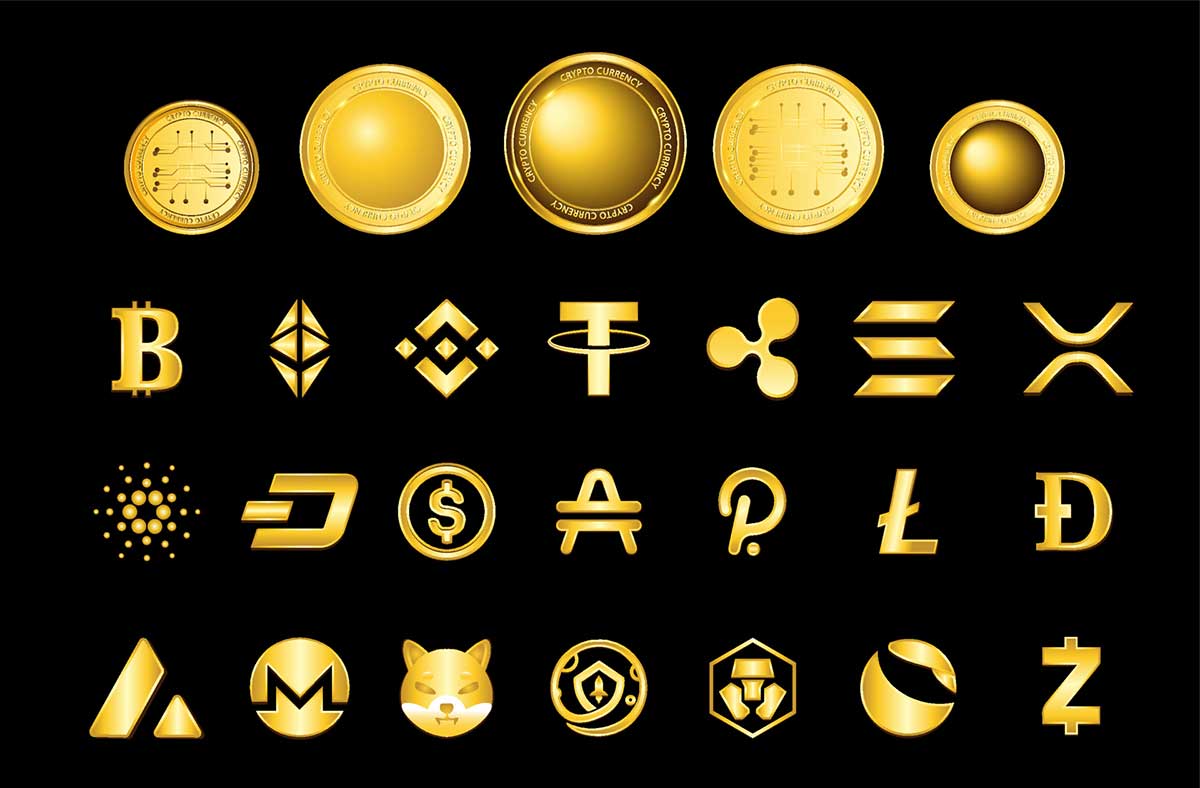Where is Blockchain Stored: Unveiling the Mysteries.

Blockchain is stored on a distributed network of computers called nodes. This ensures high security and immutability of data.
Blockchain technology has revolutionized the way we view security and transparency in data management. Blockchain is often compared to a digital ledger that records all transactions in a decentralized network of computers. The decentralized nature of blockchain means that no single entity has control over the system, making it highly secure and transparent.
One common question that many new blockchain users ask is, “where is blockchain stored? ” In this article, we delve into the details of how blockchain is stored and maintained. We explore the role of nodes, how data is validated in the network, and what makes blockchain technology so unique. By the end of the article, you’ll have a clear understanding of how blockchain is stored and why it’s such a game-changer in the world of data management.

Credit: tradewise.community
Understanding The Basics Of Blockchain Storage
Definition Of Blockchain Storage
You may have wondered where all the data from the blockchain is stored. Well, the answer is simple; blockchain storage refers to the location where all the digital data of the blockchain network is saved. Blockchain storage comprises all the information about the transactions, transactions’ history, and all the digital information that makes up the blockchain network.
Blockchain storage can be either centralized or decentralized, depending on the type of blockchain.
Explanation Of The Difference Between Decentralized And Centralized Storage
Centralized storage means a single entity or a server is responsible for storing all the data in one place. While in decentralized storage, multiple individuals or entities store data in various locations, never in one place. Centralized storage is usually less secure since a single point of failure can lead to loss of all the data.
On the other hand, blockchain technology uses decentralized storage, which offers a higher level of security since the data is stored across a network of computers, and it is virtually impossible to change it without the agreement of the network participants.
Benefits Of Decentralized Storage
Decentralized storage brings a lot of advantages to the blockchain network, including:
- Immutability: Once the data has been added to the blockchain, it cannot be altered or deleted, making it a secure way of storing data.
- Reliability: Since the data is stored across a network of computers, there is no single point of failure. Therefore, if one computer goes down, the network remains operational.
- Transparency: Decentralized storage ensures that all the participants of the network can see the data and that it is stored securely.
- Reduced costs: Decentralized storage can save costs that are incurred in a centralized system, like maintenance and servicing of a centralized database storage.
Decentralized storage offers enhanced security, reliability and transparency, making it a preferred storage option for blockchain technology.
Exploring The Various Methods Of Storing Blockchain
Blockchain technology is the talk of the town, and everyone is curious about its features, functionalities, and mechanisms. One of the most common questions asked by tech enthusiasts and enthusiasts is “where is blockchain stored? ” So, let’s dive into the topic and explore the various methods of storing blockchain.
Explanation Of Different Storage Methods
There are primarily three methods of storing blockchain: on-chain, off-chain, and hybrid. Let’s briefly understand each method:
On-Chain Storage
On-chain storage is the traditional way of storing blockchain, where all the data is stored on the blockchain itself. In this method, the entire blockchain data is replicated across the nodes on the network. Every participant in the network has a copy of the entire blockchain, making it decentralized.
Off-Chain Storage
Off-chain storage, as the name suggests, is storing blockchain data outside the chain. In this method, the data is stored in a centralized database or server, and only the transaction hashes are stored on-chain. This method is useful primarily in scaling solutions.
Hybrid Storage
Hybrid storage is a mix of both on-chain and off-chain storage. In this method, some data is stored on the blockchain itself, while some data is stored off-chain. It offers the benefits of both methods, making it more efficient and cost-effective.
Advantages And Disadvantages Of Each Method
Every method has its advantages and disadvantages, and here’s a list of those for each method:
On-Chain Storage
Advantages:
- Fully decentralized
- Data integrity is high
- Resistance to attacks and data manipulation
Disadvantages:
- Scalability issues
- Higher costs
- Slow transaction speed
Off-Chain Storage
Advantages:
- Faster transaction speed
- Cost-effective
- High scalability
Disadvantages:
- Centralized control
- Reduced security
- Higher probability of data breaches
Hybrid Storage
Advantages:
- Efficient use of storage
- Cost-effective
- High scalability
Disadvantages:
- Centralization concerns
- Increased complexity
Real-World Examples
Many companies have adopted different storage methods for blockchain. Here are some examples:
On-Chain
- Bitcoin, the most popular cryptocurrency, uses on-chain storage to maintain a single, shared ledger across the network.
- Ethereum, the second-largest cryptocurrency, also employs on-chain storage to maintain its decentralized ecosystem.
Off-Chain
- Ripple, a payment protocol, uses an off-chain solution called the interledger protocol (ilp) to achieve faster transactions.
- Lightning network, a transaction protocol built on top of bitcoin, allows for instantaneous and scalable transactions off-chain.
Hybrid
- Eos, a blockchain that operates on a hybrid consensus algorithm, uses both on-chain and off-chain storage to facilitate its decentralized applications.
- Stellar, a blockchain-based payment platform, combines on-chain and off-chain storage to achieve both decentralization and scalability.
Understanding the various methods of storing blockchain is essential for anyone keen on exploring blockchain. Ultimately, the choice of storage method depends on various factors, such as use-case, scalability, security, and cost-effectiveness.
Diving Into The Technicalities Of Blockchain Storage
Blockchain, a digital ledger technology, has introduced a new wave of security in the world of data storage and transactions. It operates as a decentralized platform, eliminating the need for intermediaries, and thereby reduces the chances of security breaches. We will dive into the technicalities of blockchain storage, exploring how it creates and connects blocks, the role of peers and consensus, and the security measures involved.
Explanation Of How Each Block Is Created And Connected To The Previous One
Each block in a blockchain contains data, a timestamp, and a unique code called the hash. When a new block is created, it contains the hash of the previous block, thus forming an unbroken chain. This process of connecting blocks together ensures the integrity and immutability of the data on the blockchain, preventing any unauthorized modifications.
Details On The Role Of Peers And Consensus In Storage
In addition to storing blocks, the blockchain network consists of nodes, called peers, that verify and validate transactions and maintain the ledger’s integrity. To ensure the synchronization of the network, they reach a consensus on the validity of each transaction through either proof of work or proof of stake mechanisms.
This decentralized approach ensures that the information stored is transparent, secure, and tamper-proof.
Discussion On Security Measures For Blockchain Storage
Blockchain storage guarantees security through hashing algorithms and public-key cryptography. It is difficult to hack into a blockchain network because it would require immense computational power to manipulate all the hashes and nodes. Moreover, the copies of the data on all the nodes in the network make it impossible to destroy the data completely because multiple copies exist in different locations.
Besides, since the blockchain ledger is immutable, it prevents data tampering or alteration, providing a more secure data management system.
Blockchain storage has brought significant changes in the way we store and secure data. By utilizing a decentralized network of peers and consensus mechanisms, and hashing algorithms, it provides a transparent, secure, and tamper-proof data management system.
The Future Of Blockchain Storage
Overview Of Current Challenges In Blockchain Storage
Blockchain technology presents a myriad of opportunities for businesses and individuals, but it also poses several challenges, particularly in data storage. Some of the major difficulties facing the blockchain technology include:
- Scalability: The issue of scalability arises when the number of transactions on the network increases, leading to a backlog.
- Security: If a wrong actor gains control of a significant percentage of the network’s computing power, they can manipulate the blockchain’s data.
- Cost: The cost of storing data on the blockchain can be high, affecting businesses and individuals looking to use the technology.
Possibilities For Advancements In Storage Technology
Storage technology innovations have moved from the simple use of hard disk drives to solid-state drives, cloud storage, and, most recently, blockchain technology. There are possibilities for further development in blockchain storage technology, including:
- Decentralized data storage: Decentralized storage would require no central authority, meaning a lower chance of data corruption.
- Encryption: Encryption provides more security for stored data, keeping it safe from potential malicious attacks.
- Increased speed: Blockchain technology’s transaction speeds are limited, but with the development of storage technology, transaction speeds could improve.
Potential Impact Of Blockchain Storage On Various Industries
Blockchain storage could radically improve industries such as finance, healthcare, and cybersecurity by making data storage more secure, accessible, and less costly. Some effects of blockchain storage on different sectors include:
- Finance: Blockchain storage offers a more secure way of storing financial data in real-time. This will drastically reduce costly cybersecurity risks for banks, transaction processing companies, and other financial institutions.
- Healthcare: Blockchain storage could revolutionize patient data management by making it easier to store, access, and share medical records. Patients can have full control of their data, giving them the power to share it with healthcare providers as they see fit.
- Cybersecurity: Storing sensitive data on blockchain technology could be a game-changer for cybersecurity, as it offers inherent security features such as distributed consensus, immutability, and hashing algorithms.
As blockchain technology continues to evolve, the possibilities for the future of storage technology are endless. It is only a matter of time before the technology becomes fully integrated into various industries, transforming how businesses store and manage their data.
Frequently Asked Questions Of Where Is Blockchain Stored
Where Is Blockchain Data Stored?
Blockchain data is stored on a distributed network of nodes. Each node stores a complete copy of the blockchain ledger.
How Is Blockchain Data Saved?
Blockchain data is saved to a decentralized ledger that is replicated across the entire network of nodes. Each transaction is verified and added to the ledger by a consensus mechanism.
Can Blockchain Data Be Deleted?
No, blockchain data cannot be deleted. Once a transaction is recorded on the blockchain, it is there permanently. This is due to the immutability feature of blockchain technology.
Who Can Access Blockchain Data?
Anyone who has access to the blockchain network can access the data stored on it. However, depending on the blockchain’s permissions and privacy settings, some data may be restricted to specific users.
Is Blockchain Data Secure?
Yes, blockchain data is highly secure due to its decentralized nature and use of cryptography. Once a transaction is verified and added to the blockchain, it cannot be altered or deleted, ensuring data security and integrity.
Conclusion
As we wrap up this blog post on where blockchain is stored, it’s clear that the process is not as straightforward as one might think. The truth is that while the decentralized nature of blockchain means that it’s not stored in any one location, it is still accessible and available through the network.
From the blockchain’s genesis block to the most recent block, each node in the network stores a copy of the entire blockchain. Therefore, each node is both a producer and a verifier, making it a secure and transparent system. With the continued growth of blockchain technology and its adoption in various industries, it’s important to understand how it works and where it’s stored.
By doing so, we can utilize its full potential and continue to innovate and transform the digital landscape.







